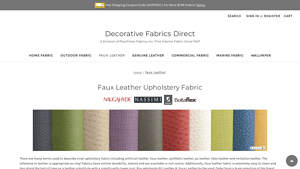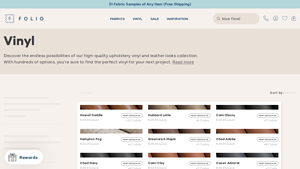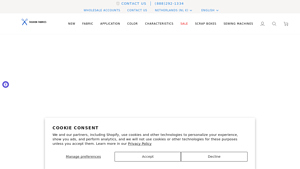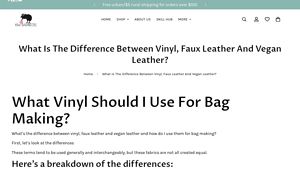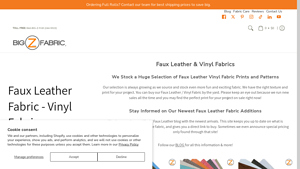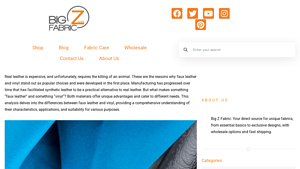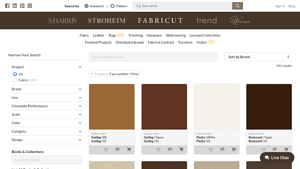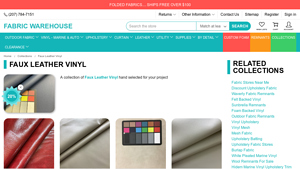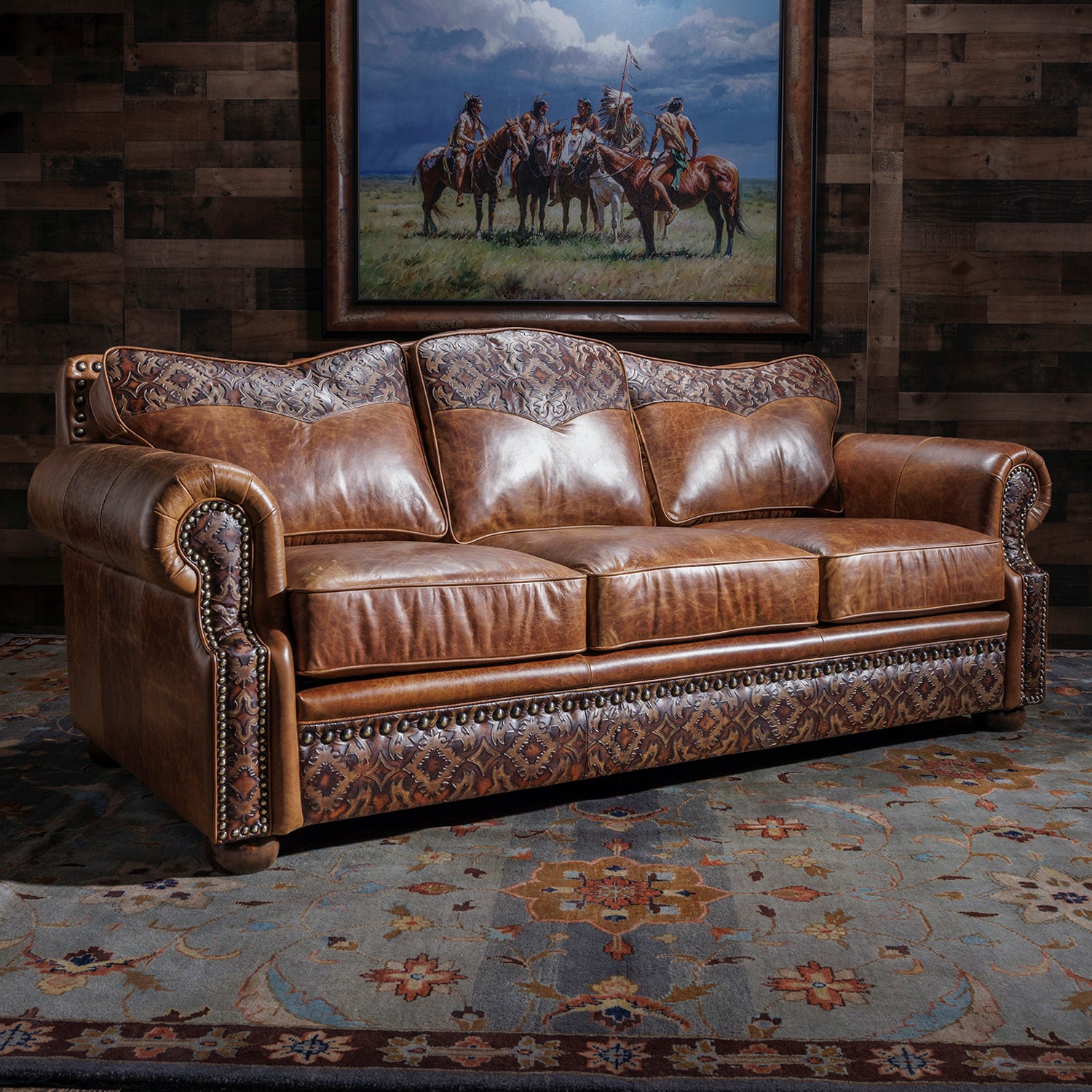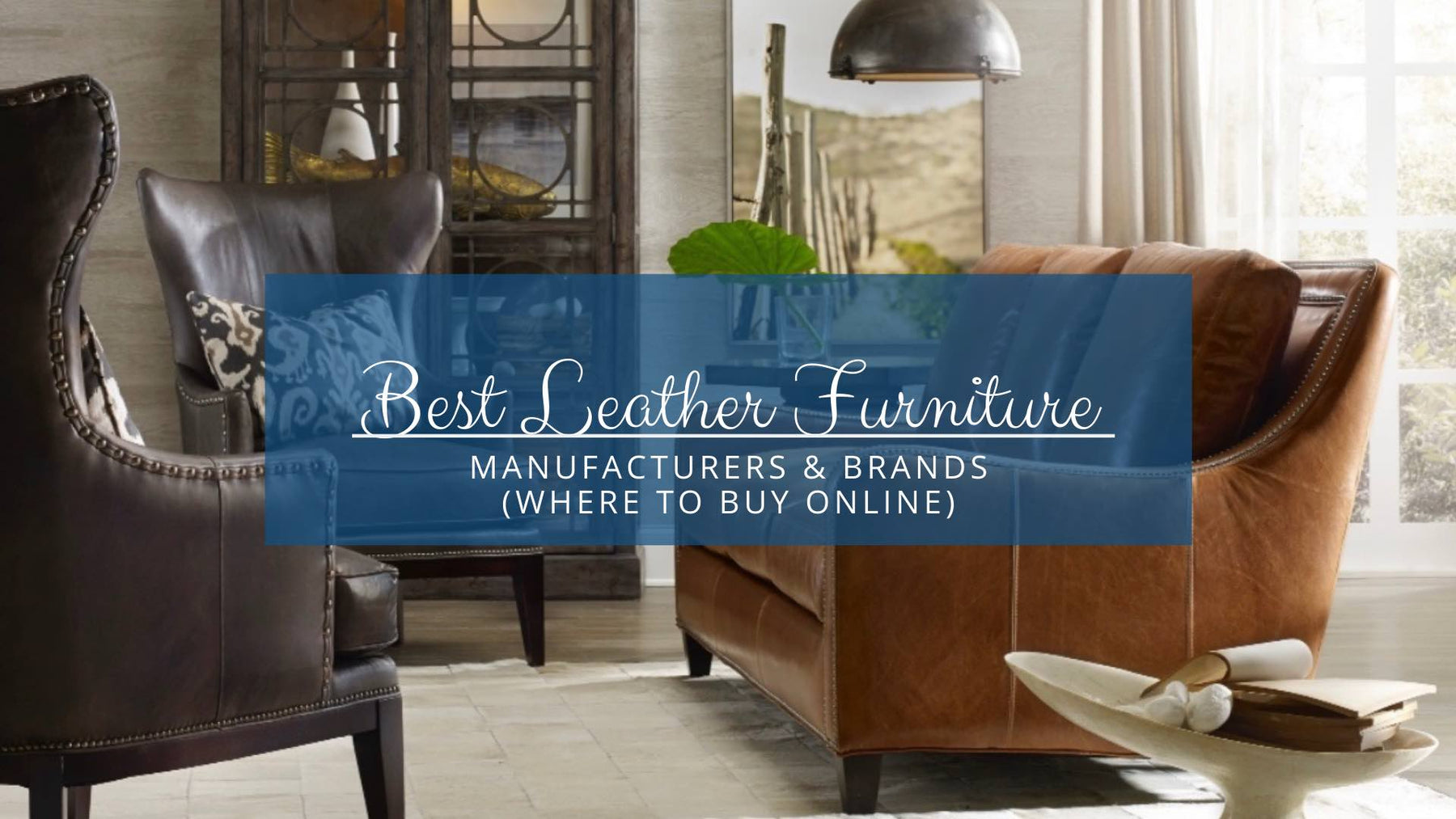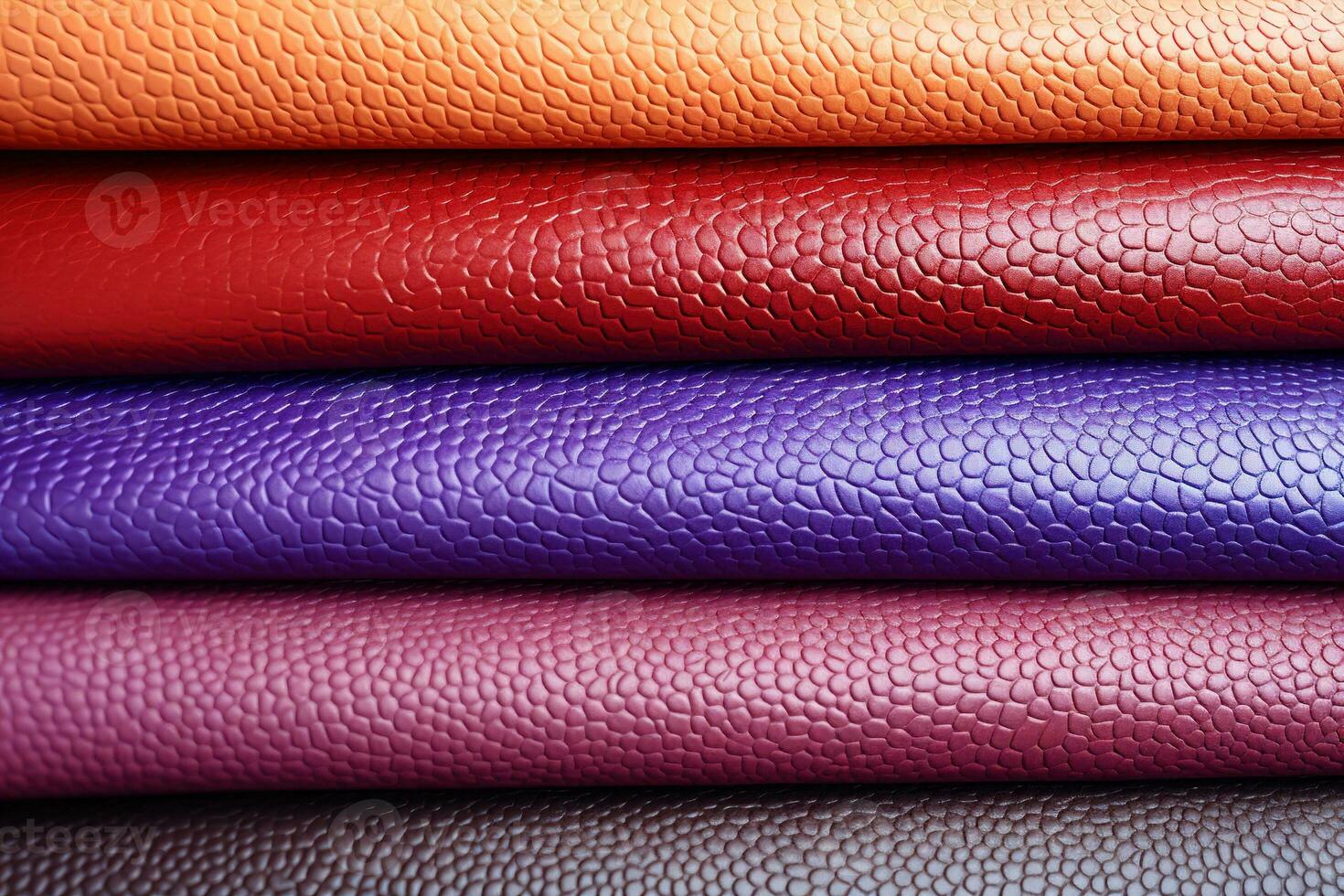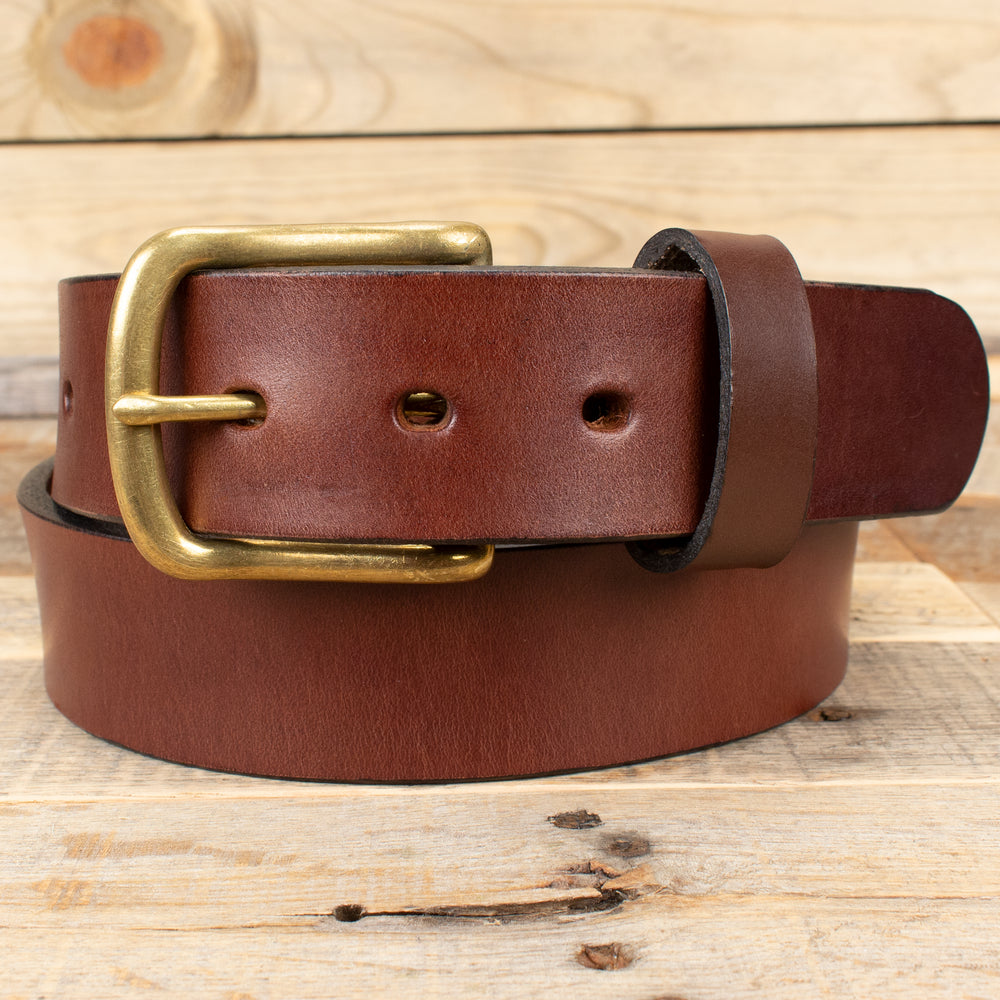Introduction: Navigating the Global Market for vinyl synthetic leather
In the competitive landscape of global sourcing, finding reliable suppliers for vinyl synthetic leather can pose significant challenges for B2B buyers, particularly those in regions like Africa, South America, the Middle East, and Europe. As industries increasingly seek cost-effective and durable alternatives to genuine leather, understanding the nuances of vinyl synthetic leather becomes essential. This guide offers a comprehensive exploration of the various types of vinyl synthetic leather, including polyurethane (PU) and polyvinyl chloride (PVC), alongside their diverse applications across sectors such as automotive, furniture, and marine upholstery.
Navigating the complexities of supplier vetting, pricing structures, and performance specifications can be daunting. However, this guide is designed to empower international buyers with actionable insights that facilitate informed purchasing decisions. By addressing critical factors such as durability, maintenance, and aesthetic versatility, we aim to equip you with the knowledge necessary to make strategic choices that align with your business needs.
Whether you’re a buyer in Germany seeking high-quality upholstery for commercial furniture or a manufacturer in Nigeria looking for sustainable materials, this guide provides the tools to navigate the global market effectively. Join us as we delve into the world of vinyl synthetic leather, ensuring you secure the best products for your projects while optimizing your sourcing strategies.
Table Of Contents
- Top 8 Vinyl Synthetic Leather Manufacturers & Suppliers List
- Introduction: Navigating the Global Market for vinyl synthetic leather
- Understanding vinyl synthetic leather Types and Variations
- Key Industrial Applications of vinyl synthetic leather
- 3 Common User Pain Points for ‘vinyl synthetic leather’ & Their Solutions
- Strategic Material Selection Guide for vinyl synthetic leather
- In-depth Look: Manufacturing Processes and Quality Assurance for vinyl synthetic leather
- Practical Sourcing Guide: A Step-by-Step Checklist for ‘vinyl synthetic leather’
- Comprehensive Cost and Pricing Analysis for vinyl synthetic leather Sourcing
- Alternatives Analysis: Comparing vinyl synthetic leather With Other Solutions
- Essential Technical Properties and Trade Terminology for vinyl synthetic leather
- Navigating Market Dynamics and Sourcing Trends in the vinyl synthetic leather Sector
- Frequently Asked Questions (FAQs) for B2B Buyers of vinyl synthetic leather
- Strategic Sourcing Conclusion and Outlook for vinyl synthetic leather
- Important Disclaimer & Terms of Use
Understanding vinyl synthetic leather Types and Variations
| Type Name | Key Distinguishing Features | Primary B2B Applications | Brief Pros & Cons for Buyers |
|---|---|---|---|
| PU Leather | Soft, supple texture; resembles genuine leather | Furniture upholstery, automotive interiors, marine use | Pros: Affordable, easy to clean; Cons: Less durable than PVC in extreme conditions |
| PVC Leather | Stiffer texture; highly water-resistant | Outdoor furniture, commercial seating, marine upholstery | Pros: Durable, cost-effective; Cons: Less breathable than PU, may crack over time |
| Eco-friendly Vinyl | Made from recycled materials; sustainable production | Eco-conscious brands, high-end furniture, fashion items | Pros: Environmentally friendly, unique designs; Cons: Higher cost, may have limited availability |
| Textured Vinyl | Embossed surface for enhanced grip and aesthetics | Automotive interiors, sports equipment, fashion bags | Pros: Attractive appearance, versatile; Cons: Texture may wear over time |
| Performance Vinyl | Advanced features like stretch and stain resistance | High-traffic commercial spaces, healthcare facilities | Pros: Long-lasting, easy maintenance; Cons: Higher initial investment |
What Are the Characteristics of PU Leather and Its Suitability for B2B Purchases?
PU leather, or polyurethane leather, is a popular synthetic alternative to genuine leather, known for its soft and supple texture. It closely mimics the appearance and feel of real leather, making it ideal for applications in furniture upholstery and automotive interiors. B2B buyers should consider PU leather for projects requiring a luxurious look without the high costs associated with genuine leather. Its ease of cleaning and lower price point make it a compelling option, though it may not withstand extreme wear and tear as well as other types.
How Does PVC Leather Differ in Application and Benefits?
PVC leather, or polyvinyl chloride leather, is characterized by its stiffer texture and exceptional water resistance. This makes it an excellent choice for outdoor furniture and commercial seating where durability is paramount. B2B buyers looking for cost-effective solutions in high-traffic environments will find PVC leather advantageous, as it is resistant to stains and easy to maintain. However, its lack of breathability compared to PU leather may lead to discomfort in certain applications.
What Makes Eco-friendly Vinyl a Sustainable Choice for Businesses?
Eco-friendly vinyl is produced using recycled materials and sustainable manufacturing processes, catering to brands that prioritize environmental responsibility. This type of vinyl is suitable for high-end furniture and fashion items, appealing to consumers who seek sustainability in their purchasing decisions. B2B buyers may face higher costs and limited availability, but the unique designs and positive brand image associated with eco-friendly products can justify the investment.
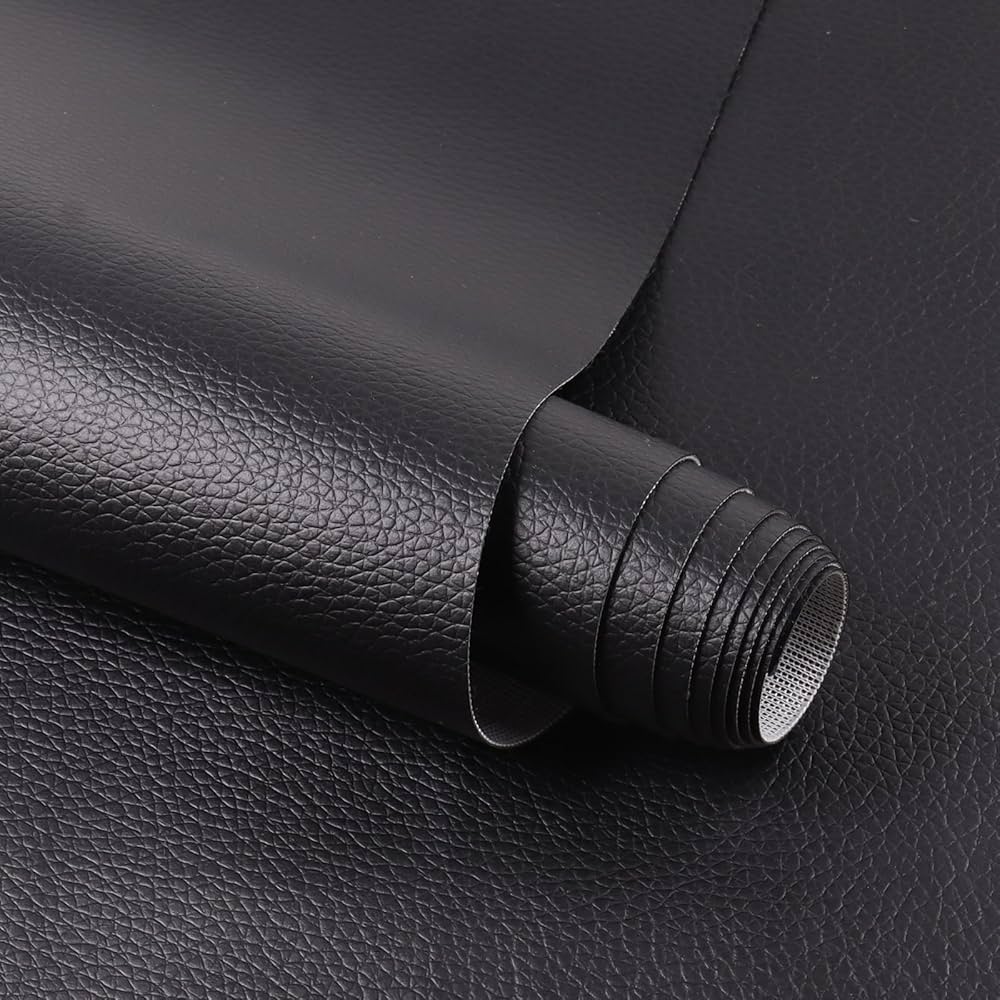
Illustrative image related to vinyl synthetic leather
Why Consider Textured Vinyl for Aesthetic and Practical Applications?
Textured vinyl features an embossed surface that enhances grip and aesthetic appeal, making it suitable for automotive interiors and sports equipment. This type of vinyl offers versatility and attractiveness, which can be a selling point for B2B buyers looking to elevate their product offerings. However, it is essential to note that the texture may wear down over time, potentially affecting its visual appeal.
What Are the Advantages of Performance Vinyl in Commercial Settings?
Performance vinyl is engineered with advanced features such as stretchability and stain resistance, making it an ideal choice for high-traffic commercial spaces and healthcare facilities. B2B buyers should consider performance vinyl for its long-lasting durability and ease of maintenance, especially in environments where cleanliness is critical. Although the initial investment may be higher, the long-term benefits of reduced replacement costs and lower maintenance needs can offer significant savings.
Key Industrial Applications of vinyl synthetic leather
| Industry/Sector | Specific Application of vinyl synthetic leather | Value/Benefit for the Business | Key Sourcing Considerations for this Application |
|---|---|---|---|
| Furniture Manufacturing | Upholstery for residential and commercial furniture | Durable, easy-to-clean, and cost-effective alternative to genuine leather | Quality assurance, color options, and compliance with safety standards |
| Automotive | Interior seating and trim materials | Lightweight, water-resistant, and customizable for aesthetics | Supplier reliability, material certifications, and performance specifications |
| Marine Industry | Upholstery for boat interiors and cushions | Resistance to moisture and UV damage, enhancing longevity | Weather resistance, colorfastness, and ease of maintenance |
| Healthcare | Upholstery for medical furniture and equipment | Antimicrobial properties and easy cleanability for hygiene | Compliance with health regulations and durability under frequent use |
| Fashion and Accessories | Handbags, wallets, and apparel | Eco-friendly, versatile designs appealing to conscious consumers | Trend alignment, material sourcing ethics, and cost-effectiveness |
How is Vinyl Synthetic Leather Used in Furniture Manufacturing?
In the furniture manufacturing sector, vinyl synthetic leather serves as a popular upholstery choice for both residential and commercial applications. Its durability and ease of cleaning make it ideal for high-traffic areas, such as hotels and restaurants. For international buyers, particularly from regions like Africa and Europe, sourcing options that offer a variety of colors and textures can enhance the aesthetic appeal of their products. Additionally, ensuring compliance with safety standards is crucial to meet consumer expectations and regulations.
What Role Does Vinyl Synthetic Leather Play in the Automotive Industry?
The automotive industry utilizes vinyl synthetic leather primarily for seating and interior trim. This material provides a lightweight, water-resistant alternative that can be customized to match a vehicle’s design. Buyers should prioritize suppliers who can guarantee performance specifications, such as abrasion resistance and UV stability, to ensure longevity. For buyers from South America and the Middle East, understanding regional preferences for aesthetics and comfort can guide sourcing decisions effectively.
How is Vinyl Synthetic Leather Applied in the Marine Industry?
In the marine industry, vinyl synthetic leather is commonly used for boat interiors and cushions due to its resistance to moisture and UV damage. This application enhances the longevity of upholstery in challenging marine environments. International buyers should consider sourcing options that emphasize weather resistance and colorfastness, as these features are critical for maintaining the appearance and functionality of marine upholstery over time.
Why is Vinyl Synthetic Leather Important in Healthcare?
In healthcare settings, vinyl synthetic leather is used for upholstering medical furniture and equipment due to its antimicrobial properties and easy cleanability. This is essential for maintaining hygiene standards in hospitals and clinics. Buyers in this sector must ensure that the materials comply with health regulations and are durable enough to withstand frequent cleaning. Sourcing from reputable suppliers who understand these requirements can enhance operational efficiency and patient safety.
How is Vinyl Synthetic Leather Transforming Fashion and Accessories?
The fashion and accessories industry is increasingly adopting vinyl synthetic leather for products like handbags, wallets, and apparel. Its eco-friendly nature and versatility in design appeal to a growing base of environmentally conscious consumers. B2B buyers should consider the alignment of sourcing practices with current fashion trends and consumer preferences, ensuring that their products not only meet aesthetic demands but also ethical standards in material sourcing.
3 Common User Pain Points for ‘vinyl synthetic leather’ & Their Solutions
Scenario 1: Sourcing Quality Vinyl Synthetic Leather
The Problem: B2B buyers often struggle with sourcing high-quality vinyl synthetic leather that meets their specific project requirements. This can lead to frustration, as poor-quality materials can result in compromised product durability, aesthetic appeal, and customer satisfaction. Buyers may encounter inconsistent quality, unexpected color variations, or materials that don’t meet performance specifications, which can jeopardize their projects and ultimately affect their bottom line.
The Solution: To ensure the procurement of quality vinyl synthetic leather, buyers should establish a thorough vetting process for suppliers. This involves requesting samples to assess the material’s texture, durability, and color fidelity. Additionally, buyers should seek suppliers who provide detailed product specifications, including information on performance features like stain resistance, UV stability, and water resistance. Collaborating with manufacturers who offer customization options can also be advantageous, allowing for tailored solutions that align with specific project needs. Engaging in direct communication with suppliers to discuss project requirements and expectations can further enhance the sourcing process, ensuring that the selected materials will fulfill both functional and aesthetic demands.
Scenario 2: Managing Costs While Maintaining Quality
The Problem: Many buyers face the challenge of balancing budget constraints with the need for high-quality vinyl synthetic leather. The allure of lower-priced materials can be tempting, but compromising on quality can lead to higher long-term costs due to increased maintenance, replacements, or customer dissatisfaction. This dilemma often leaves buyers feeling pressured to make decisions that may not align with their brand values or customer expectations.
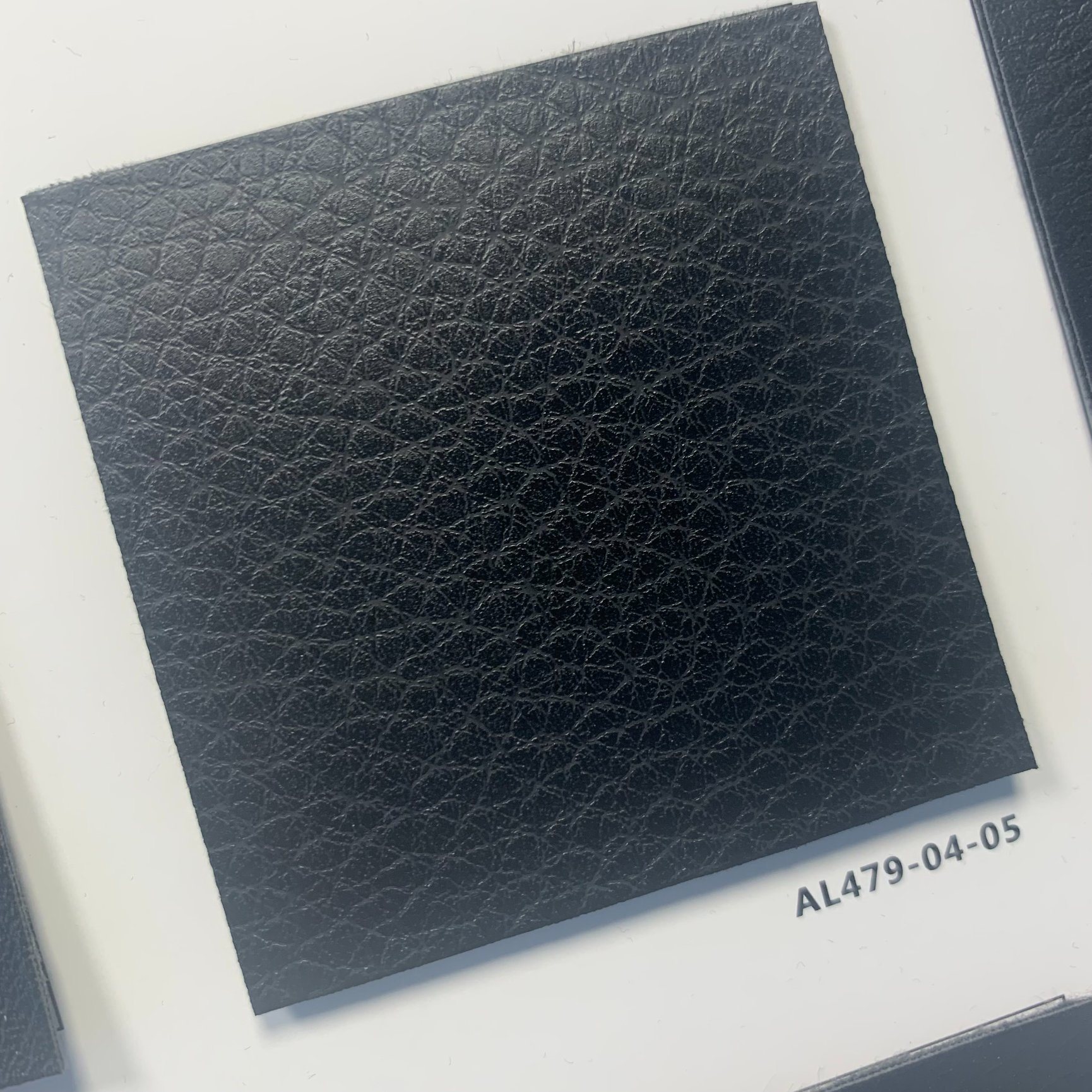
Illustrative image related to vinyl synthetic leather
The Solution: A strategic approach to cost management involves conducting a total cost of ownership (TCO) analysis rather than focusing solely on initial purchase prices. Buyers should consider factors such as durability, maintenance requirements, and potential longevity of the vinyl synthetic leather options. Investing in higher-quality materials that may have a higher upfront cost can yield savings over time through reduced replacement rates and lower maintenance needs. Additionally, buyers can explore bulk purchasing options or long-term contracts with suppliers to negotiate better pricing without sacrificing quality. Establishing strong relationships with suppliers can also lead to better insight into upcoming product launches or exclusive deals, providing opportunities to secure premium materials at competitive prices.
Scenario 3: Ensuring Compliance with Industry Standards
The Problem: In various sectors, such as automotive, marine, and healthcare, compliance with industry standards and regulations is critical. Buyers often find themselves overwhelmed by the need to ensure that the vinyl synthetic leather they source meets specific safety and performance criteria. Non-compliance can result in costly penalties, product recalls, or even damage to a company’s reputation.
The Solution: To navigate compliance challenges effectively, buyers should familiarize themselves with the relevant regulations in their industry, such as fire safety standards or environmental certifications. When sourcing vinyl synthetic leather, it is essential to work with suppliers who can provide documentation proving that their products meet these standards. Buyers should ask for test results, compliance certifications, and any other relevant documentation that attests to the material’s safety and performance. Additionally, staying updated on industry trends and regulatory changes can help buyers proactively adapt their sourcing strategies. Participating in industry trade shows and forums can also provide valuable insights into compliance requirements and best practices, ensuring that their sourcing decisions are informed and compliant.
Strategic Material Selection Guide for vinyl synthetic leather
What Are the Key Materials Used in Vinyl Synthetic Leather Production?
When selecting vinyl synthetic leather for various applications, understanding the different materials available is crucial. Here, we analyze four common materials used in the production of vinyl synthetic leather, focusing on their properties, advantages, disadvantages, and considerations for international B2B buyers.
1. Polyurethane (PU) Leather
Key Properties: PU leather is created by applying a polyurethane coating to a fabric backing, providing a soft, supple texture that closely resembles genuine leather. It is known for its excellent flexibility, abrasion resistance, and water repellency.
Pros & Cons: The primary advantage of PU leather is its affordability, costing up to 75% less than genuine leather. It is also easy to clean and maintain, making it suitable for high-traffic areas. However, PU leather may not be as durable as PVC options in extreme conditions, potentially leading to wear over time.
Impact on Application: PU leather is widely used in furniture upholstery, automotive interiors, and fashion accessories. Its softness makes it ideal for products requiring a luxurious feel.
Considerations for International Buyers: Buyers should ensure compliance with local regulations regarding chemical emissions and safety standards. For instance, EU buyers may refer to REACH regulations, while those in Africa and South America should consider local environmental laws.
2. Polyvinyl Chloride (PVC) Leather
Key Properties: PVC leather is produced by coating a base fabric with polyvinyl chloride, resulting in a durable and water-resistant material. It often includes additives to enhance flexibility and UV resistance.
Pros & Cons: PVC leather is highly durable, making it suitable for outdoor applications such as marine upholstery. It is also less expensive than PU leather. However, it may lack the softness and breathability of PU, making it less desirable for fashion applications.
Impact on Application: PVC leather is commonly used in commercial settings, such as restaurants and hotels, where durability and ease of cleaning are paramount.
Considerations for International Buyers: Compliance with international standards like ASTM and DIN is crucial, especially for buyers in Europe and the Middle East. Additionally, buyers should be aware of the environmental impact of PVC and seek suppliers who adhere to sustainability practices.
3. Eco-Friendly Synthetic Leather
Key Properties: Eco-friendly synthetic leather is made from recycled materials or bio-based sources, offering a sustainable alternative to traditional synthetic leathers. It often features similar properties to PU and PVC leathers, including water resistance and durability.
Pros & Cons: The primary advantage is its reduced environmental impact, appealing to eco-conscious consumers. However, the production process can be more complex and costly, potentially leading to higher prices.
Impact on Application: This material is suitable for high-end fashion products and eco-friendly furniture lines, catering to a growing market segment that prioritizes sustainability.
Considerations for International Buyers: Buyers should verify certifications such as Global Recycled Standard (GRS) or OEKO-TEX, which ensure environmental compliance. This is particularly important in Europe, where sustainability standards are stringent.
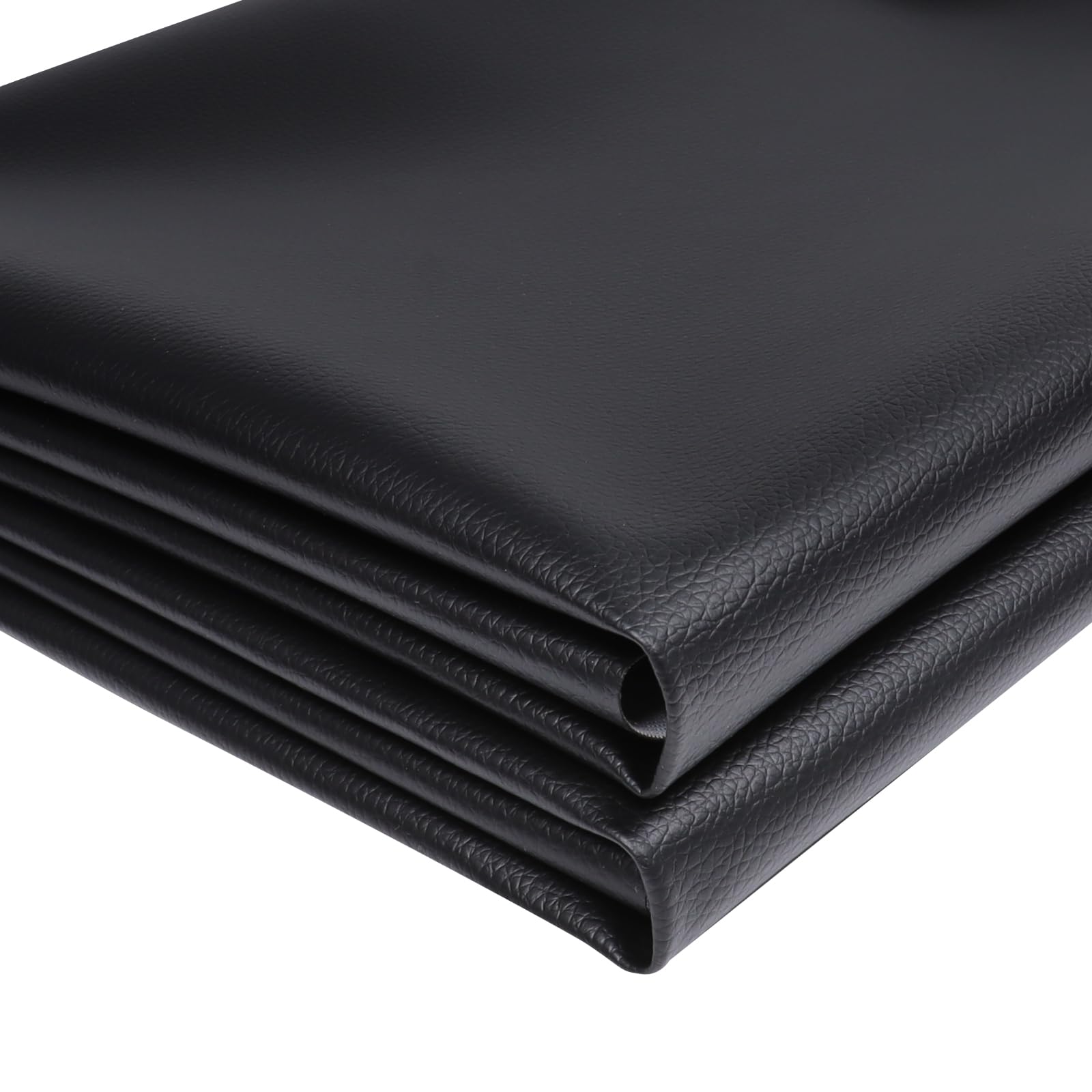
Illustrative image related to vinyl synthetic leather
4. Microfiber Leather
Key Properties: Microfiber leather is composed of ultra-fine synthetic fibers that mimic the texture and appearance of genuine leather. It is breathable, lightweight, and offers excellent stain resistance.
Pros & Cons: Microfiber leather is highly durable and easy to clean, making it suitable for various applications, including automotive and home furnishings. However, it can be more expensive than traditional synthetic leathers.
Impact on Application: Its softness and durability make microfiber leather ideal for luxury items, such as high-end furniture and fashion accessories.
Considerations for International Buyers: Buyers should consider the sourcing and production methods to ensure ethical practices. Compliance with international quality standards is also essential, especially in markets like Germany, where product quality is highly scrutinized.
Summary Table of Vinyl Synthetic Leather Materials
| Material | Typical Use Case for vinyl synthetic leather | Key Advantage | Key Disadvantage/Limitation | Relative Cost (Low/Med/High) |
|---|---|---|---|---|
| Polyurethane (PU) Leather | Furniture upholstery, automotive interiors | Soft, luxurious feel, easy maintenance | Less durable in extreme conditions | Low |
| Polyvinyl Chloride (PVC) Leather | Commercial settings, outdoor applications | Highly durable, cost-effective | Lacks softness and breathability | Low |
| Eco-Friendly Synthetic Leather | High-end fashion, eco-friendly furniture | Sustainable, reduced environmental impact | Higher production costs | Medium |
| Microfiber Leather | Luxury furniture, fashion accessories | Durable, easy to clean | Higher cost than traditional synthetics | High |
This guide provides a comprehensive overview of the materials used in vinyl synthetic leather production, enabling B2B buyers to make informed decisions based on their specific needs and market conditions.
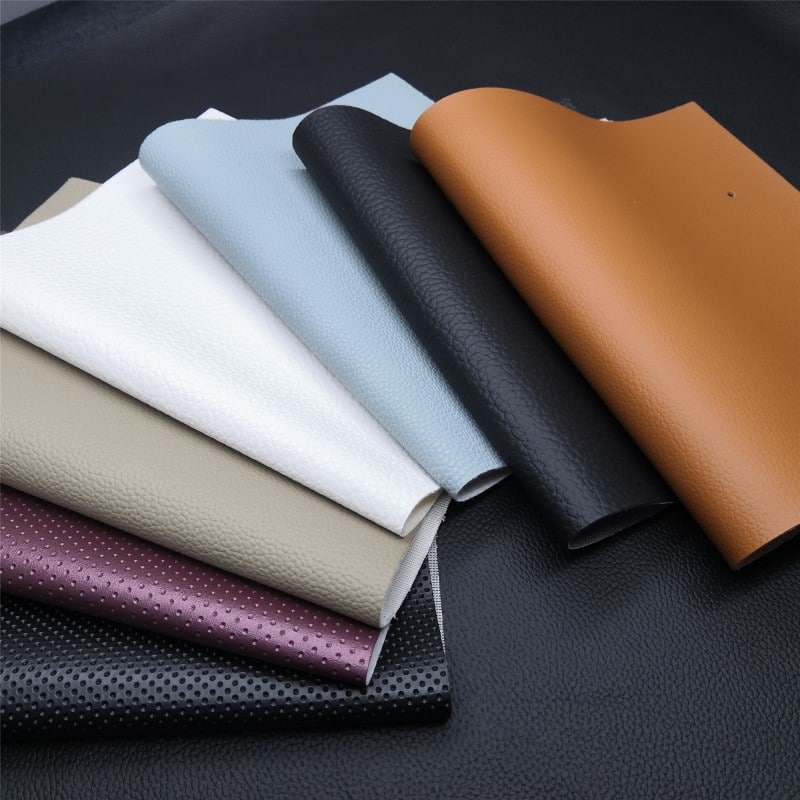
Illustrative image related to vinyl synthetic leather
In-depth Look: Manufacturing Processes and Quality Assurance for vinyl synthetic leather
What Are the Main Stages of Manufacturing Vinyl Synthetic Leather?
The manufacturing of vinyl synthetic leather involves several critical stages that ensure the final product meets durability and aesthetic standards. Understanding these stages is vital for B2B buyers looking to source high-quality materials.
Material Preparation: What Raw Materials Are Used?
The initial phase involves selecting and preparing the raw materials. Typically, the primary components are a fabric backing, which can be made from polyester or cotton, and a polymer coating, commonly polyvinyl chloride (PVC) or polyurethane (PU). The backing fabric provides structural integrity, while the polymer imparts the leather-like appearance and performance characteristics.
Before application, the backing is cleaned and treated to enhance adhesion. This preparation ensures that the vinyl layer adheres effectively during the subsequent forming stage.
How Is Vinyl Synthetic Leather Formed?
The forming stage is where the actual vinyl synthetic leather is created. The polymer is applied to the prepared backing through various techniques, such as:
-
Coating: This involves spreading a liquid polymer mixture onto the fabric using rollers or a spray method. It ensures an even distribution of the coating.
-
Extrusion: In this method, the polymer is melted and forced through a die to create a continuous sheet. This technique allows for precise thickness control.
-
Calendering: Here, the polymer is passed through rollers to achieve the desired thickness and texture. This process can also impart a grain pattern to mimic genuine leather.
Once the polymer is applied, it is cured through heat or chemical processes, solidifying the material and enhancing its durability.
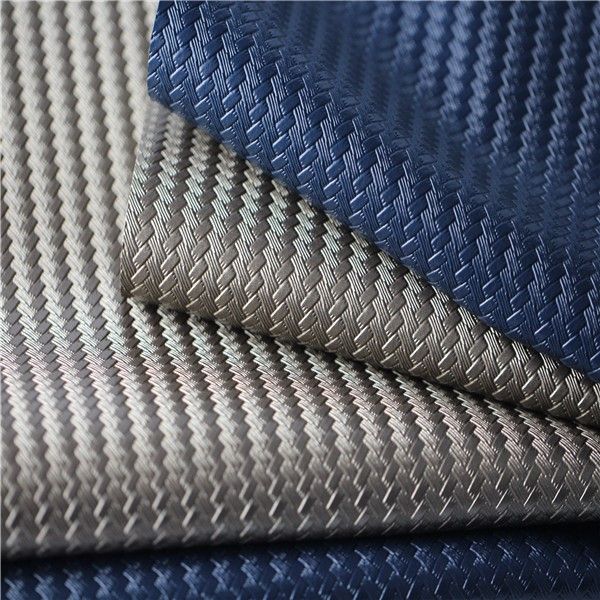
Illustrative image related to vinyl synthetic leather
What Happens During the Assembly Stage?
After forming, the synthetic leather undergoes an assembly process. This may include cutting the material into specified dimensions for various applications, such as upholstery, automotive interiors, or fashion accessories.
Additionally, manufacturers may add features during assembly, such as embossing for texture, lamination for added protection, or back-coating for improved adhesion. This stage is crucial for ensuring that the final product meets the specific requirements of the end-use applications.
What Finishing Techniques Are Employed for Vinyl Synthetic Leather?
The finishing stage involves applying additional treatments to enhance the material’s performance and appearance. Common finishing techniques include:
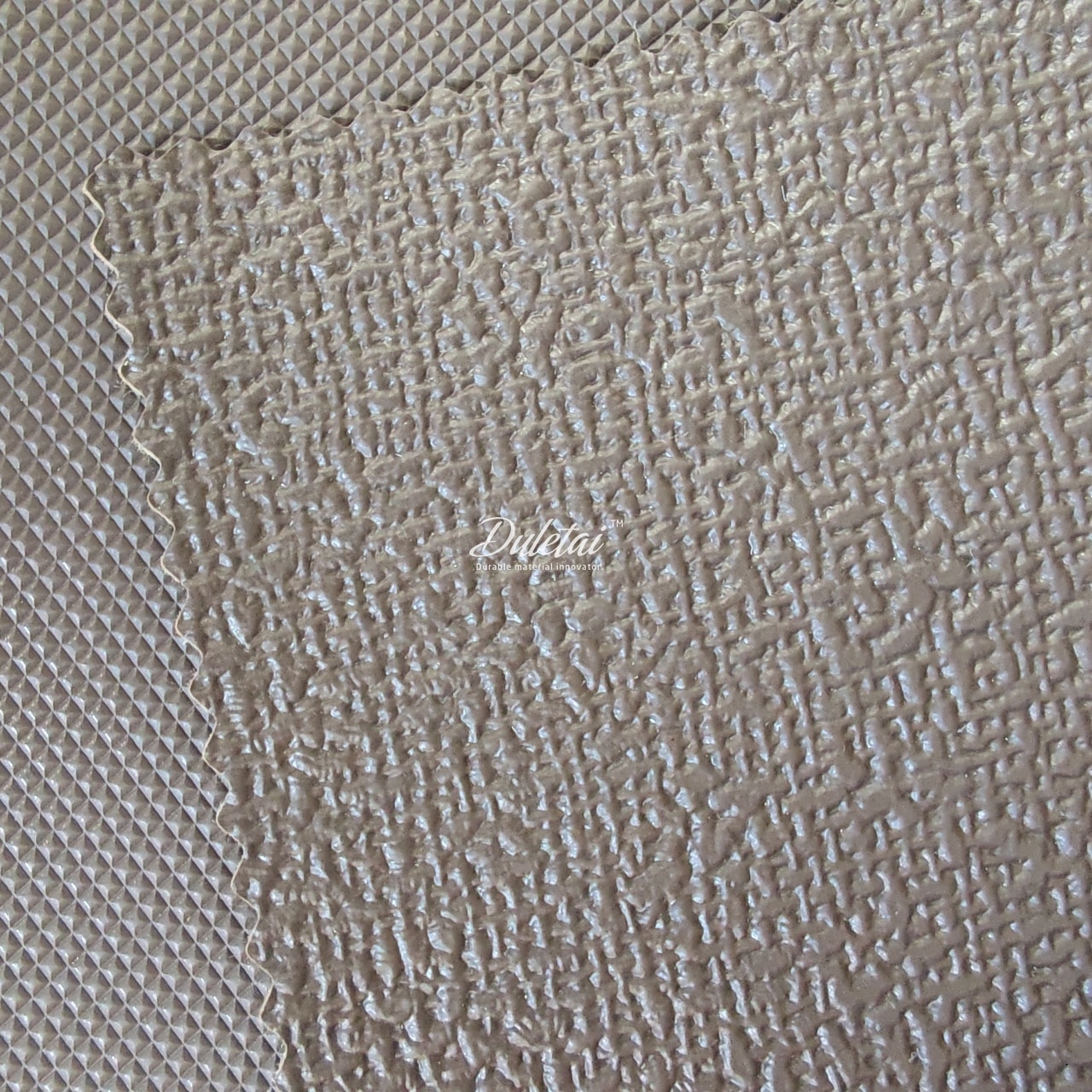
Illustrative image related to vinyl synthetic leather
-
Coating with Protective Layers: A protective topcoat can be applied to improve stain resistance, UV stability, and overall durability.
-
Coloring and Dyeing: Advanced coloring techniques can be employed to achieve vibrant hues and patterns, increasing the aesthetic appeal of the material.
-
Texture Enhancement: Techniques such as embossing and debossing can create a more authentic leather-like feel, making the product more attractive to consumers.
These finishing touches not only enhance the visual appeal but also contribute to the longevity and usability of the vinyl synthetic leather.
How Is Quality Assurance Implemented in Vinyl Synthetic Leather Manufacturing?
Quality assurance (QA) is a critical aspect of the manufacturing process, ensuring that the final product meets international and industry-specific standards. B2B buyers should be aware of the following QA measures.
What International Standards Should Buyers Be Aware Of?
Manufacturers of vinyl synthetic leather typically adhere to international quality standards such as ISO 9001, which emphasizes quality management systems and customer satisfaction. Compliance with these standards ensures that the manufacturing processes are consistent and meet defined quality criteria.
In addition to ISO standards, specific certifications such as CE (Conformité Européenne) for products sold in Europe and API (American Petroleum Institute) for materials used in industrial applications may also apply. These certifications demonstrate compliance with safety and performance regulations, which can be crucial for B2B buyers in various sectors.
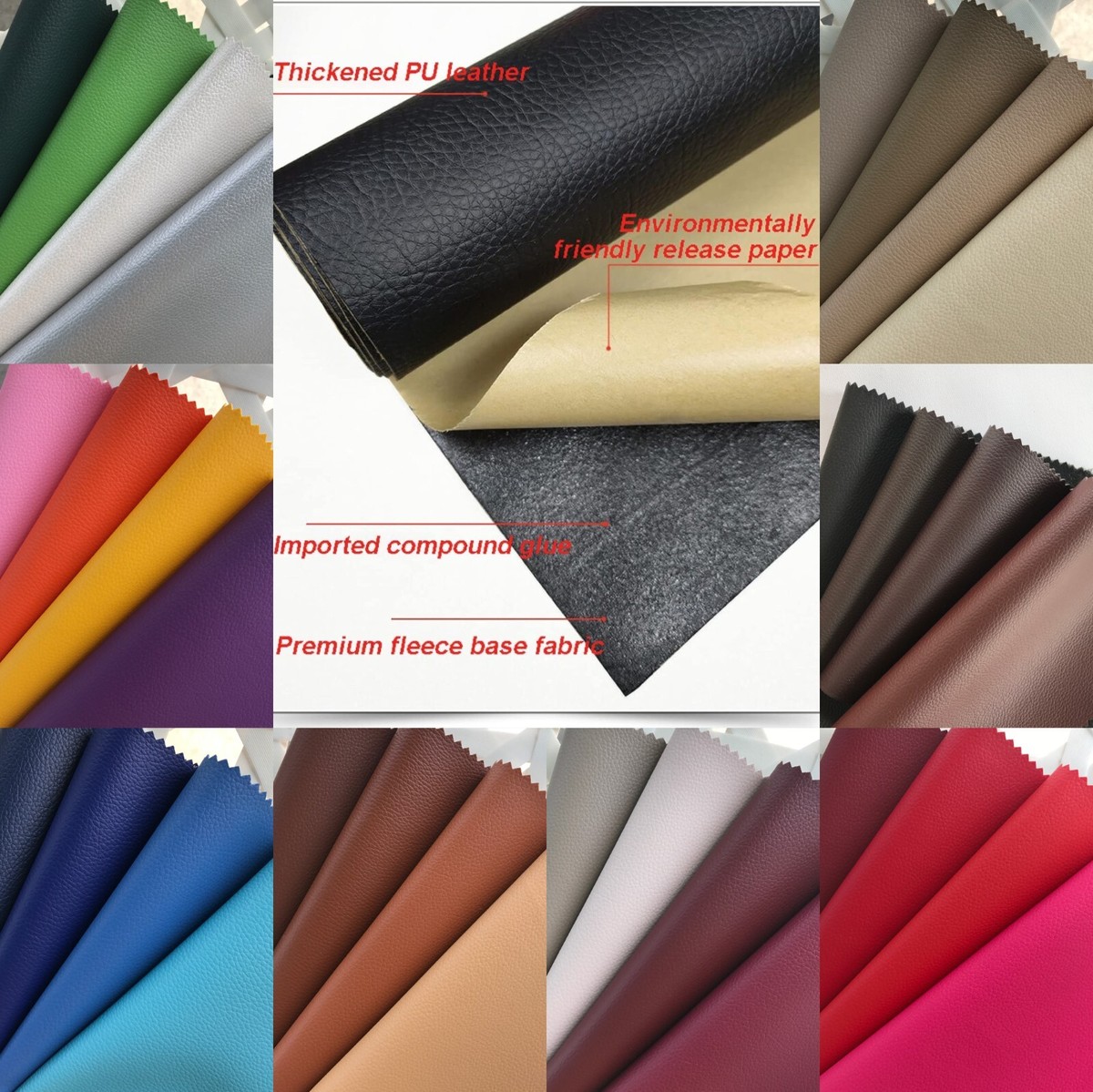
Illustrative image related to vinyl synthetic leather
What Are the Key Quality Control Checkpoints?
Quality control is generally segmented into several checkpoints throughout the manufacturing process:
-
Incoming Quality Control (IQC): This checkpoint involves inspecting raw materials before they enter the production line. Ensuring that materials meet specified standards is critical to avoid defects in the final product.
-
In-Process Quality Control (IPQC): During the manufacturing process, continuous monitoring is performed to catch any deviations from quality standards. This may include checking thickness, texture, and adhesion of the vinyl layer.
-
Final Quality Control (FQC): Once the product is completed, it undergoes rigorous testing for durability, stain resistance, and colorfastness. This final assessment ensures that the synthetic leather meets all specified requirements before shipment.
How Can B2B Buyers Verify Supplier Quality Control?
B2B buyers should take proactive steps to verify the quality control processes of their suppliers. Here are actionable strategies:
-
Request Documentation: Ask for quality control reports, including IQC, IPQC, and FQC results. Comprehensive documentation can provide insights into the manufacturer’s commitment to quality.
-
Conduct Supplier Audits: Regular audits can help assess the supplier’s adherence to quality standards and manufacturing practices. This can be done by the buyer or through third-party inspection services.
-
Engage Third-Party Inspection Services: Utilizing independent inspection services can offer an unbiased assessment of the quality control processes and the final product, ensuring it meets your requirements.
-
Review Certifications: Verify that the supplier holds relevant certifications, such as ISO 9001, CE, or other industry-specific standards. This can serve as a benchmark for the supplier’s quality assurance efforts.
What Nuances Should International Buyers Consider?
International B2B buyers, particularly from regions like Africa, South America, the Middle East, and Europe, should be aware of specific nuances in sourcing vinyl synthetic leather.
-
Regulatory Compliance: Different regions may have varying regulations regarding synthetic materials, including chemical safety and environmental impact. Familiarizing yourself with these regulations can prevent compliance issues.
-
Supply Chain Considerations: Understanding the logistics of importing synthetic leather, including tariffs and shipping costs, can significantly impact overall costs. Engage with suppliers who are experienced in international trade to streamline this process.
-
Cultural Preferences: Different markets may have distinct preferences regarding material characteristics, colors, and textures. Conducting market research can help tailor offerings to meet local demands effectively.
By understanding the manufacturing processes and quality assurance practices of vinyl synthetic leather, B2B buyers can make informed decisions that align with their business needs and market requirements.
Practical Sourcing Guide: A Step-by-Step Checklist for ‘vinyl synthetic leather’
Introduction
This practical sourcing guide aims to assist B2B buyers in procuring high-quality vinyl synthetic leather. With an array of options available globally, it is essential to follow a systematic approach to ensure that you select the right product that meets your business needs. This checklist will help streamline the sourcing process, ensuring you make informed decisions.
Step 1: Define Your Technical Specifications
Before initiating the sourcing process, clearly outline your technical requirements. This includes determining the intended application—whether for upholstery, automotive, or commercial use—and the specific characteristics needed, such as durability, water resistance, and color options. Establishing these specifications upfront helps narrow down potential suppliers and ensures that the materials meet your quality expectations.
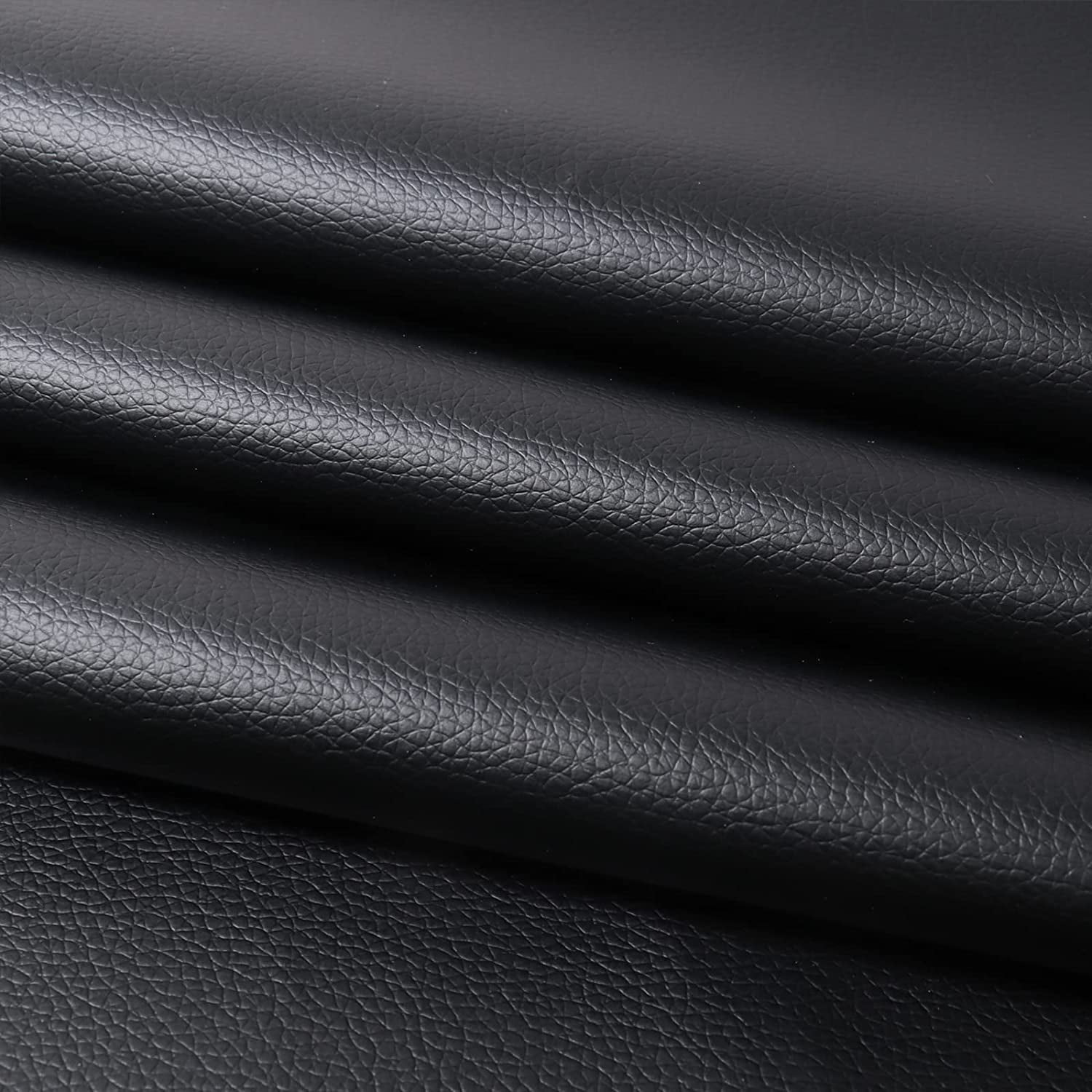
Illustrative image related to vinyl synthetic leather
Step 2: Research Potential Suppliers
Conduct thorough research to identify reputable suppliers specializing in vinyl synthetic leather. Utilize online directories, industry trade shows, and networking events to compile a list of candidates. Pay attention to their market presence, product range, and customer reviews, as these factors can provide insight into their reliability and product quality.
Step 3: Evaluate Potential Suppliers
Before committing, it’s crucial to vet suppliers thoroughly. Request company profiles, product samples, and references from buyers in similar industries or regions. Look for suppliers that have experience with your specific application to ensure they understand your needs and can deliver quality products.
- Check Certifications: Verify if the suppliers have relevant certifications, such as ISO or environmental compliance, which indicate adherence to quality and sustainability standards.
- Assess Production Capabilities: Ensure that the supplier has the necessary facilities and technology to meet your volume and customization requirements.
Step 4: Request Samples and Test Quality
Once you have shortlisted potential suppliers, request samples of their vinyl synthetic leather products. Testing these samples for color consistency, texture, and durability will help you assess whether they meet your specifications. Additionally, consider the ease of cleaning and maintenance, as these factors can significantly affect the product’s long-term usability.
Step 5: Analyze Pricing and Terms
Compare pricing structures among suppliers, but don’t base your decision solely on cost. Analyze what is included in the price, such as shipping, warranties, and after-sales support. Understanding the total cost of ownership will help you make a more informed decision, ensuring that you are getting the best value for your investment.
Step 6: Negotiate Contracts and Terms
Once you have selected a supplier, engage in negotiations to finalize contracts and terms. Be clear about your expectations regarding delivery timelines, payment terms, and quality assurances. A well-defined contract protects both parties and establishes a foundation for a successful business relationship.
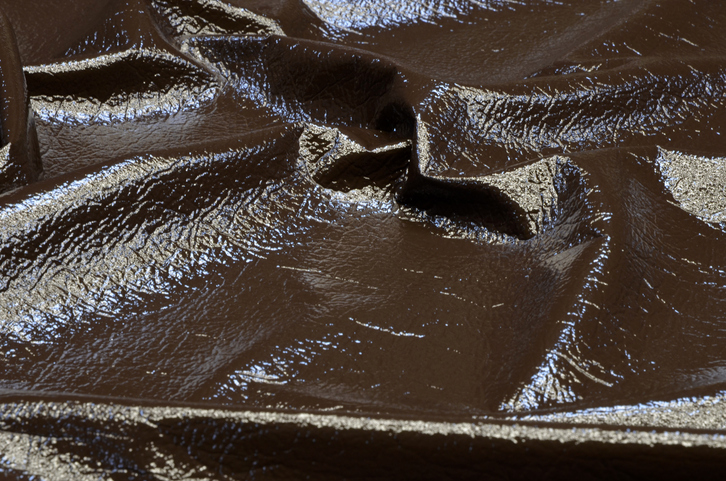
Illustrative image related to vinyl synthetic leather
Step 7: Establish a Quality Control Process
After placing your order, implement a quality control process to monitor the production and delivery of the vinyl synthetic leather. Regular communication with the supplier during this phase can help address any issues proactively. Additionally, having a quality assurance plan in place ensures that the received products meet your specifications and standards.
By following these steps, B2B buyers can effectively navigate the sourcing process for vinyl synthetic leather, ensuring they procure high-quality materials that align with their business needs.
Comprehensive Cost and Pricing Analysis for vinyl synthetic leather Sourcing
What Are the Key Cost Components in Sourcing Vinyl Synthetic Leather?
When sourcing vinyl synthetic leather, several cost components must be considered to achieve an accurate pricing analysis. The primary elements include:
-
Materials: The cost of raw materials significantly influences the overall pricing. Vinyl synthetic leather is typically made from a polymer plastic coating, with variations like PU (polyurethane) and PVC (polyvinyl chloride). The choice between these materials can affect both price and quality.
-
Labor: Manufacturing labor costs vary based on the region and the complexity of the production process. Skilled labor is necessary for quality assurance and ensuring that the final product meets the required specifications.
-
Manufacturing Overhead: This includes costs related to utilities, facility maintenance, and administrative expenses associated with the manufacturing process. These costs are often distributed across the volume of products produced.
-
Tooling: The initial setup costs for production tooling can be significant, particularly for custom designs. Companies should consider these costs when evaluating the total expenditure for specialized vinyl synthetic leather.
-
Quality Control (QC): Implementing a robust QC process ensures that the synthetic leather meets industry standards and specifications. This may involve additional costs for testing and certification.
-
Logistics: Transportation and shipping costs, including freight and handling, are essential components of the total cost structure. These expenses can fluctuate based on the distance to the buyer and the chosen shipping method.
-
Margin: Finally, suppliers will incorporate a profit margin into their pricing structure, which can vary based on market conditions and competitive positioning.
How Do Price Influencers Affect Vinyl Synthetic Leather Sourcing?
Several factors can influence the pricing of vinyl synthetic leather, particularly in the context of international B2B transactions:
-
Volume and Minimum Order Quantity (MOQ): Larger orders often benefit from economies of scale, leading to lower per-unit costs. Buyers should negotiate MOQs to optimize their purchasing strategy.
-
Specifications and Customization: Custom designs or specific performance characteristics (e.g., stain resistance, eco-friendly materials) can increase costs. Buyers should be clear about their specifications to avoid unexpected price increases.
-
Materials and Quality Certifications: Higher-quality materials or those with specific certifications (e.g., eco-friendly or fire-retardant) may come at a premium. Understanding the value of these certifications can help buyers make informed decisions.
-
Supplier Factors: The reliability and reputation of suppliers can impact pricing. Established suppliers may charge higher prices due to their track record of quality and service.
-
Incoterms: The terms of delivery (Incoterms) dictate who bears the cost and risk at various stages of the supply chain. Understanding these terms is crucial for calculating the total cost of ownership.
What Are the Best Buyer Tips for Cost-Efficiency in Vinyl Synthetic Leather Sourcing?
International B2B buyers, particularly from regions such as Africa, South America, the Middle East, and Europe, should consider the following tips to enhance cost-efficiency:
-
Negotiate Prices: Engage in discussions with suppliers to negotiate better pricing based on order volume, long-term relationships, or potential for repeat business.
-
Evaluate Total Cost of Ownership: Beyond the initial purchase price, consider long-term factors such as durability, maintenance, and potential waste. Vinyl synthetic leather’s ease of cleaning and resistance to damage can result in lower overall costs.
-
Understand Pricing Nuances for International Transactions: Currency fluctuations and import duties can impact final costs. Buyers should factor these into their budgets and explore hedging options where applicable.
-
Research Local Market Conditions: Different regions may have varying pricing structures influenced by local supply and demand dynamics. Understanding these conditions can help buyers make more strategic sourcing decisions.
Disclaimer on Indicative Prices
Prices for vinyl synthetic leather can vary widely based on the factors outlined above. The figures presented in this analysis serve as a guideline and may not reflect actual market conditions at the time of purchase. Buyers should conduct thorough market research and obtain multiple quotes to ensure they secure the best possible pricing for their specific needs.
Alternatives Analysis: Comparing vinyl synthetic leather With Other Solutions
Exploring Alternatives to Vinyl Synthetic Leather for B2B Buyers
When considering materials for upholstery and other applications, it is essential for B2B buyers to evaluate various options available in the market. Vinyl synthetic leather is a popular choice due to its affordability and versatility, but there are other alternatives that may better suit specific needs depending on the application. Below, we compare vinyl synthetic leather with two viable alternatives: genuine leather and polyurethane (PU) leather.
| Comparison Aspect | Vinyl Synthetic Leather | Genuine Leather | Polyurethane (PU) Leather |
|---|---|---|---|
| Performance | Durable, water-resistant, and easy to clean | Highly durable, breathable, and luxurious feel | Soft, flexible, and visually similar to genuine leather |
| Cost | 75% less than genuine leather | Premium pricing due to sourcing and processing | Mid-range, more affordable than genuine leather |
| Ease of Implementation | Readily available, easy to cut and sew | Requires specialized tools and skills for crafting | Easy to work with, similar to vinyl |
| Maintenance | Low maintenance, wipe clean | Requires regular conditioning and care | Low maintenance, easy to clean with mild detergent |
| Best Use Case | Commercial furniture, automotive, and marine applications | High-end furniture, luxury vehicles, and fashion | Affordable upholstery, casual furniture, and accessories |
In-Depth Analysis of Alternatives
What Are the Benefits and Drawbacks of Genuine Leather?
Genuine leather is revered for its durability and classic appeal, often seen as a status symbol. It offers a unique texture and breathability, making it comfortable for use in high-end furniture and luxury vehicles. However, it comes at a premium price, which can be a significant drawback for budget-conscious buyers. Additionally, genuine leather requires regular maintenance to prevent cracking and drying, which can deter some businesses from choosing it for commercial applications.
How Does Polyurethane (PU) Leather Compare?
PU leather serves as a middle ground between vinyl synthetic leather and genuine leather. It offers a soft, supple texture that mimics the feel of real leather while being more affordable than genuine options. PU leather is also easy to clean and maintain, making it suitable for various applications, from casual furniture to accessories. However, it may not provide the same level of durability as genuine leather and could be less desirable for high-end applications where luxury aesthetics are paramount.

Illustrative image related to vinyl synthetic leather
Making the Right Choice for Your Business Needs
When selecting the right material for upholstery or other applications, B2B buyers must consider their specific needs, including budget, durability, and aesthetic preferences. Vinyl synthetic leather stands out for its affordability and low maintenance, making it ideal for commercial and automotive uses. In contrast, genuine leather is suited for high-end applications where quality and luxury are prioritized, albeit at a higher cost. PU leather provides a balance, offering a softer feel while being more affordable than genuine leather.
Ultimately, the choice will depend on the intended use, budget constraints, and desired aesthetic. By carefully evaluating these factors, businesses can make informed decisions that align with their operational goals and customer expectations.
Essential Technical Properties and Trade Terminology for vinyl synthetic leather
What Are the Key Technical Properties of Vinyl Synthetic Leather?
When sourcing vinyl synthetic leather, understanding its technical specifications is essential for making informed purchasing decisions. Below are critical properties that B2B buyers should consider:
1. Material Composition
Vinyl synthetic leather is primarily made from polyvinyl chloride (PVC) or polyurethane (PU). PVC is more rigid and durable, often used in applications requiring high resistance to wear and tear. PU, on the other hand, is softer and more flexible, providing a leather-like feel that appeals to consumers. Knowing the material composition helps buyers align product features with their specific applications, whether for furniture, automotive, or marine use.
2. Thickness and Weight
The thickness of vinyl synthetic leather is measured in millimeters (mm) and typically ranges from 0.5 mm to 2.0 mm. The weight is usually expressed in grams per square meter (gsm). Thicker materials often provide greater durability and resistance to punctures, making them suitable for high-traffic areas. Conversely, lighter options may be more appropriate for applications requiring flexibility. Buyers should assess these specifications based on their project’s demands.
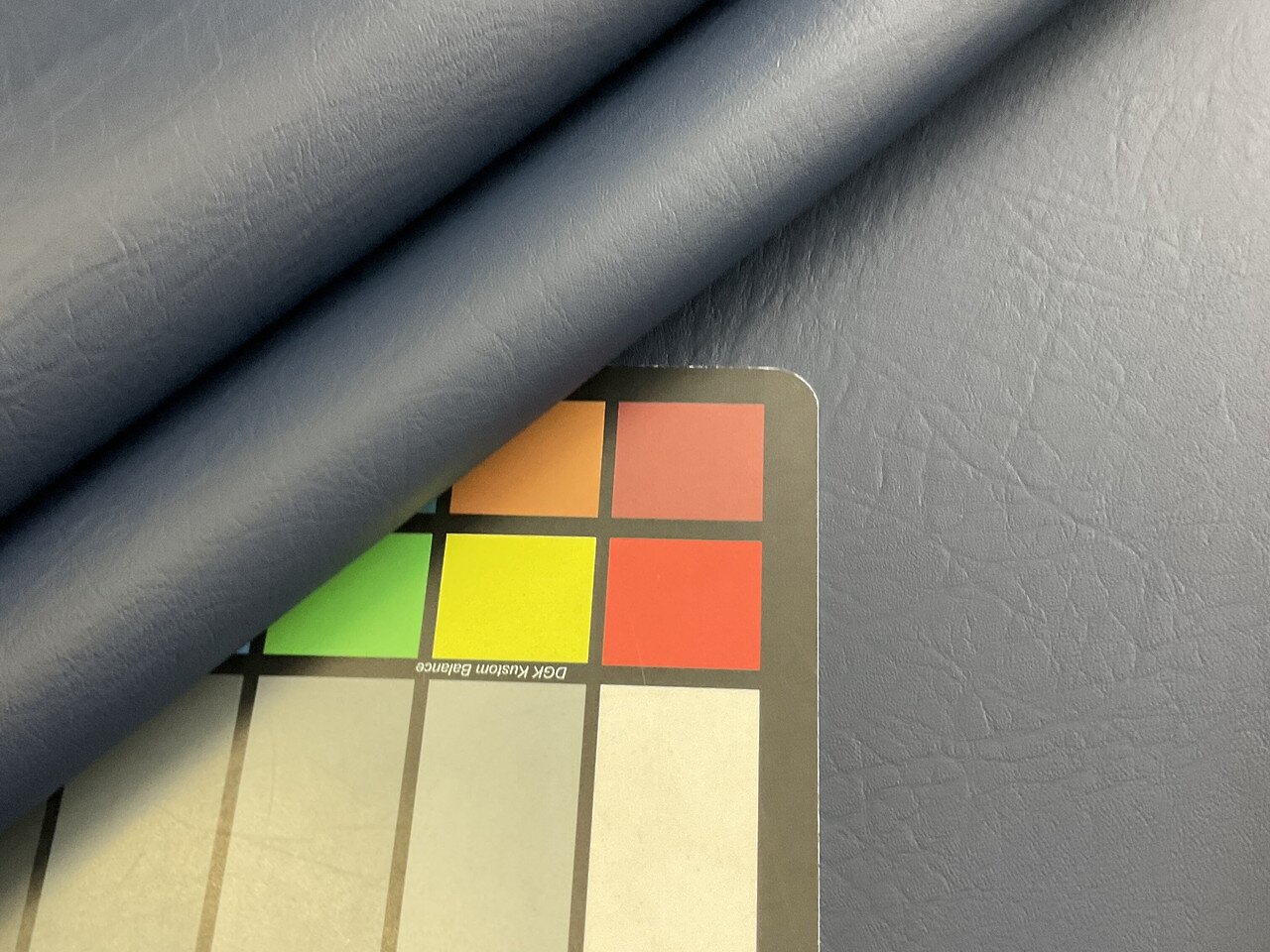
Illustrative image related to vinyl synthetic leather
3. Abrasion Resistance
This property indicates how well the synthetic leather can withstand wear from friction. It is usually measured using the Martindale test, where samples are rubbed against abrasive material until wear is visible. A higher number of cycles before wear indicates better durability. For B2B buyers, understanding abrasion resistance is crucial for ensuring longevity in products, particularly in commercial settings.
4. UV Resistance
Vinyl synthetic leather can be treated to resist ultraviolet (UV) light, which can cause fading and degradation over time. This property is particularly important for outdoor applications, such as patio furniture or marine upholstery. Buyers must evaluate UV resistance to ensure their products maintain aesthetic appeal and functionality under sun exposure.
5. Fire Resistance
For applications in public spaces or transportation, fire resistance is often a regulatory requirement. Vinyl synthetic leather can be treated to meet specific fire safety standards. Buyers should confirm compliance with local regulations to avoid legal issues and ensure the safety of their end-users.
What Common Trade Terms Should B2B Buyers Know?
Understanding industry jargon is vital for effective communication and negotiation in the synthetic leather market. Below are essential trade terms:

Illustrative image related to vinyl synthetic leather
1. OEM (Original Equipment Manufacturer)
An OEM refers to a company that produces parts or equipment that may be marketed by another manufacturer. In the context of synthetic leather, an OEM may provide materials that are used in the production of finished goods, such as furniture or automotive interiors. Understanding this term helps buyers identify potential partners and assess product authenticity.
2. MOQ (Minimum Order Quantity)
MOQ indicates the smallest number of units that a supplier is willing to sell. This term is crucial for budgeting and inventory management, as it can impact the overall cost and availability of materials. Buyers should inquire about MOQs to ensure they can meet their project needs without excess inventory.
3. RFQ (Request for Quotation)
An RFQ is a document issued by a buyer to solicit price proposals from suppliers for specific products. It typically includes detailed specifications, quantities, and delivery timelines. Understanding how to create and respond to RFQs can streamline procurement processes and facilitate better pricing negotiations.
4. Incoterms
Incoterms are international commercial terms that define the responsibilities of buyers and sellers in global trade. They cover aspects such as shipping, insurance, and risk transfer. Familiarity with Incoterms can help buyers navigate logistics and clarify cost responsibilities in their contracts.
5. Lead Time
Lead time refers to the duration from placing an order to its delivery. This term is vital for project planning, as it affects production schedules and inventory management. Buyers should always discuss lead times with suppliers to align expectations and avoid potential disruptions.
By understanding these properties and terms, B2B buyers can make more informed decisions when sourcing vinyl synthetic leather, ensuring they select the right products for their applications.
Navigating Market Dynamics and Sourcing Trends in the vinyl synthetic leather Sector
What are the Key Market Dynamics and Trends in the Vinyl Synthetic Leather Sector?
The vinyl synthetic leather market is experiencing robust growth driven by several global factors. The increasing demand for cost-effective, durable, and versatile materials across various industries such as automotive, furniture, and fashion is a significant market driver. With the rise of e-commerce, international B2B buyers are leveraging online platforms to source high-quality vinyl synthetic leather. Emerging technologies like digital printing and automated manufacturing are enhancing product customization and production efficiency, allowing suppliers to cater to specific regional preferences, particularly in Africa, South America, and Europe.
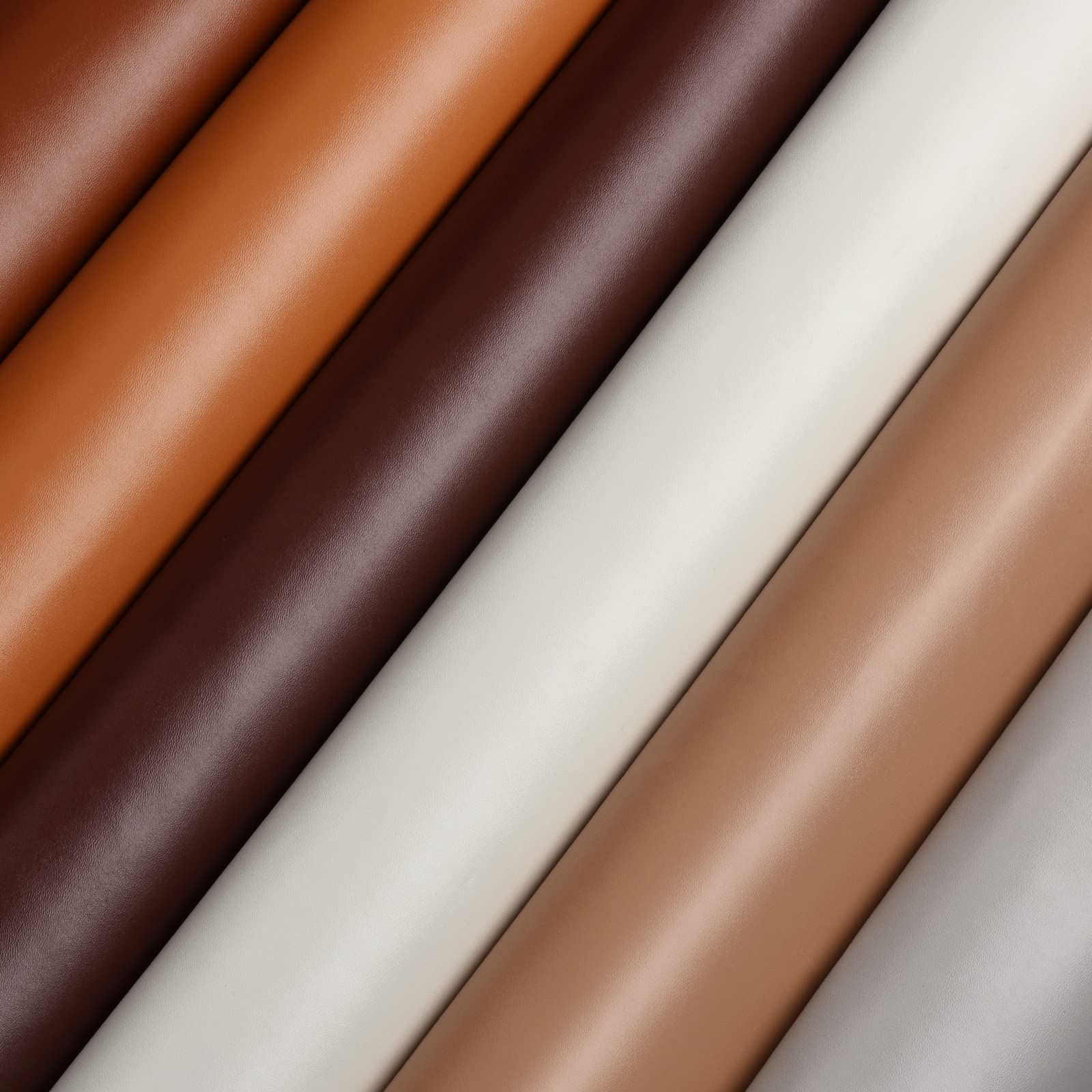
Illustrative image related to vinyl synthetic leather
Regional dynamics also play a crucial role. For instance, in Europe, stringent regulations regarding animal welfare and environmental impact are pushing manufacturers towards synthetic alternatives. In contrast, Africa and South America present growth opportunities due to their expanding middle class and increasing consumer demand for affordable luxury goods. Buyers in these regions should be aware of local market trends, including the preference for vibrant colors and unique textures that can differentiate their offerings.
Furthermore, the rise of online marketplaces has streamlined sourcing processes, enabling buyers to access a wider variety of products and suppliers. Key trends include the integration of eco-friendly materials and features like stain and water resistance, which are becoming essential selling points. Understanding these dynamics is crucial for international buyers looking to capitalize on the vinyl synthetic leather market.
How Does Sustainability and Ethical Sourcing Impact the Vinyl Synthetic Leather Sector?
Sustainability has become a cornerstone of sourcing strategies in the vinyl synthetic leather sector. The environmental impact of traditional leather production, including land use and water consumption, has prompted buyers to seek alternatives that align with sustainable practices. Vinyl synthetic leather, primarily composed of man-made materials, offers a more environmentally friendly solution. However, the production process still requires careful consideration regarding plastic use and waste management.
Ethical supply chains are increasingly important to B2B buyers, who are now prioritizing suppliers with transparent practices. Certifications such as Global Recycled Standard (GRS) and OEKO-TEX® Standard 100 assure buyers that the materials are produced responsibly, minimizing environmental harm. Furthermore, as consumers become more eco-conscious, brands that incorporate sustainable materials into their products are likely to enhance their market appeal.
Buyers should also consider the lifecycle of vinyl synthetic leather products, focusing on durability and recyclability. By sourcing materials that are both high-performing and environmentally responsible, businesses can improve their brand reputation and meet growing consumer expectations for sustainability.
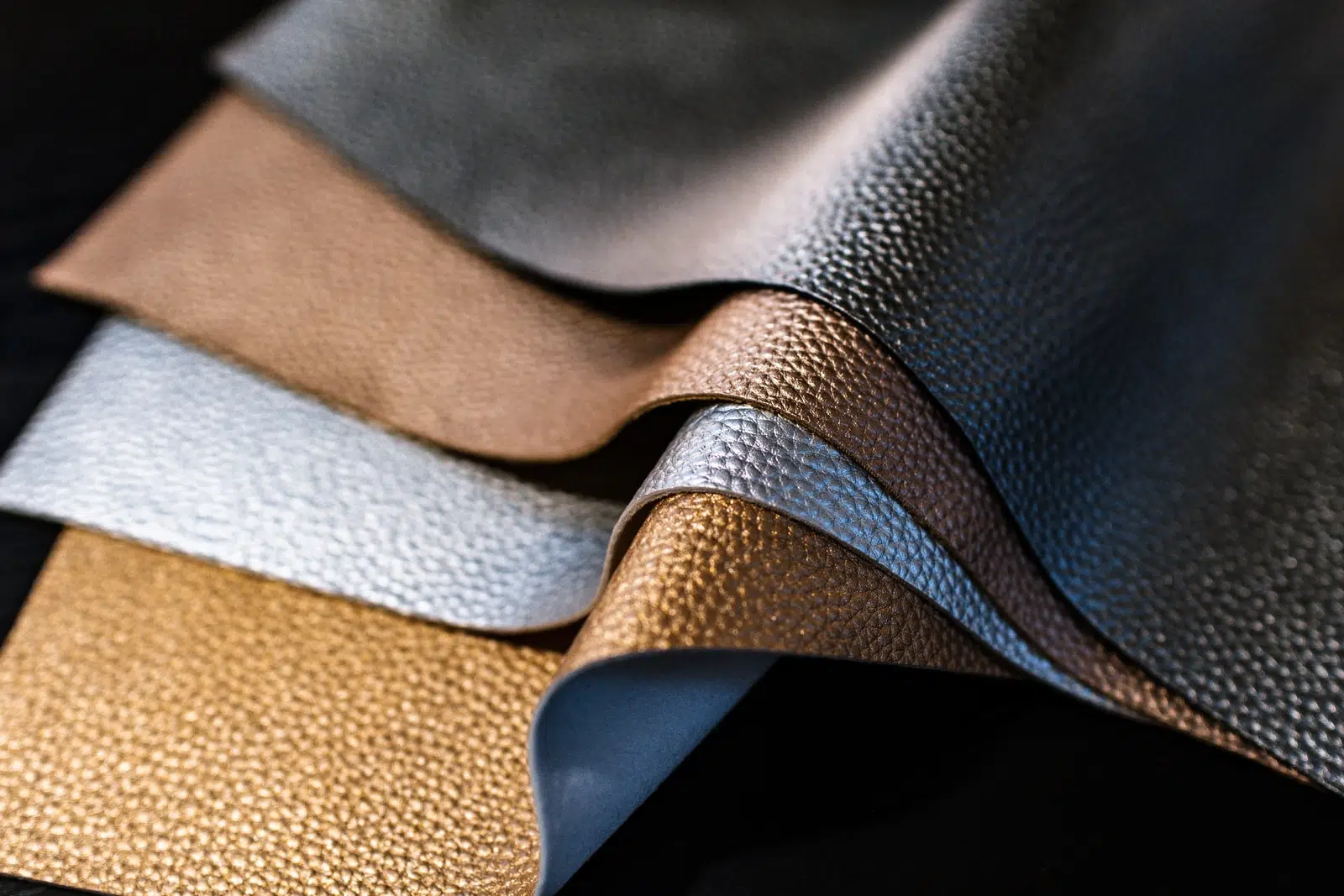
Illustrative image related to vinyl synthetic leather
What is the Evolution of Vinyl Synthetic Leather in the B2B Market?
The evolution of vinyl synthetic leather dates back to the early 20th century when innovations in synthetic materials began to offer alternatives to genuine leather. Originally developed for cost-effective upholstery solutions, vinyl synthetic leather has transformed into a versatile material used across various sectors, from automotive interiors to fashion accessories. The introduction of polyurethane (PU) leather in the 1960s marked a significant advancement, as it provided a softer and more flexible alternative to traditional vinyl.
Over the years, the market has seen continuous improvements in production techniques, enhancing the aesthetic and functional properties of synthetic leather. Today, buyers benefit from a diverse range of options, including eco-friendly variants that cater to the growing demand for sustainable products. This evolution reflects broader trends in consumer preferences, where quality, affordability, and sustainability converge, making vinyl synthetic leather a staple in modern B2B sourcing strategies.
By understanding these historical developments, international buyers can better appreciate the material’s capabilities and align their sourcing decisions with current market trends and consumer expectations.
Frequently Asked Questions (FAQs) for B2B Buyers of vinyl synthetic leather
-
How do I choose the right vinyl synthetic leather for my project?
Selecting the appropriate vinyl synthetic leather involves assessing your specific project requirements, such as durability, aesthetic preferences, and intended use. For high-traffic areas, consider materials with enhanced abrasion resistance and stain-resistant finishes. Evaluate the thickness and flexibility of the fabric, as these factors influence its application in upholstery, automotive, or marine settings. Additionally, sourcing samples from suppliers can help you make informed decisions about texture and color before bulk purchasing. -
What are the key advantages of using vinyl synthetic leather over genuine leather?
Vinyl synthetic leather offers numerous advantages, including a significantly lower cost—up to 75% less than genuine leather. It is also easier to maintain, as it is water and stain-resistant, allowing for quick clean-up with a damp cloth. Furthermore, synthetic leather is available in a wider array of colors and textures, catering to various design aesthetics. Importantly, it is a sustainable option, as it is made from man-made materials rather than animal hides, appealing to eco-conscious businesses. -
What is the typical minimum order quantity (MOQ) for vinyl synthetic leather?
Minimum order quantities for vinyl synthetic leather can vary widely by supplier and product type. Generally, MOQs range from 50 to 500 yards, depending on the manufacturer’s policies and the specific material being ordered. It’s advisable to discuss your needs directly with suppliers to negotiate terms that fit your purchasing strategy, especially if you are considering a custom color or texture that may require a larger order. -
How can I verify the quality of vinyl synthetic leather before purchasing?
To ensure quality, request samples of the vinyl synthetic leather from potential suppliers before placing a large order. Evaluate the samples for texture, flexibility, and durability. Look for certifications that indicate compliance with international standards (e.g., ISO, REACH) to confirm that the material is safe and durable. Additionally, reviewing client testimonials and case studies can provide insight into the supplier’s reliability and the performance of their products in real-world applications. -
What payment terms should I expect when sourcing vinyl synthetic leather internationally?
Payment terms for international orders can vary significantly among suppliers. Common arrangements include upfront payments, partial payments upon order confirmation, and the balance upon delivery. Letter of Credit (LC) and PayPal are also popular methods for securing transactions. Always clarify payment terms before finalizing agreements and consider negotiating terms that offer flexibility based on your cash flow and order size. -
What logistics considerations should I keep in mind when importing vinyl synthetic leather?
When importing vinyl synthetic leather, consider shipping costs, import duties, and lead times. Ensure that your supplier provides clear shipping options and delivery timelines. It is also essential to understand the customs regulations in your country to avoid unexpected delays. Collaborating with a logistics partner who specializes in international trade can help streamline the process and ensure that your materials arrive on time and in good condition. -
Can I customize colors or textures when ordering vinyl synthetic leather?
Many suppliers offer customization options for colors and textures of vinyl synthetic leather. However, minimum order quantities and additional costs may apply for custom designs. It’s important to communicate your specific requirements early in the negotiation process to ensure that the supplier can accommodate your needs. Requesting a digital proof or sample of the customized material can also help avoid discrepancies in the final product. -
What are the best practices for maintaining vinyl synthetic leather products?
Maintaining vinyl synthetic leather is straightforward. Regularly wipe surfaces with a damp cloth to remove dirt and prevent stains. For tougher stains, a mild soap solution can be used, but avoid harsh chemicals that can damage the material. Ensure that the upholstery is kept away from direct sunlight to prevent fading over time. Implementing these practices will prolong the life of your vinyl synthetic leather products and maintain their appearance.
Top 8 Vinyl Synthetic Leather Manufacturers & Suppliers List
1. Decorative Fabrics Direct – PU Leather & Vinyl Upholstery Fabric
Domain: decorativefabricsdirect.com
Registered: 2004 (21 years)
Introduction: PU Leather & Faux Leather | Vinyl Upholstery Fabric
– Terms: Free Shipping Coupon Code: SHIPFREE for most $199 orders.
– Product Types: Faux leather, vinyl upholstery fabric, artificial leather, synthetic leather, PU leather, imitation leather.
– Features: Durable, easy to clean, available in rich colors, significantly lower cost than genuine leather.
– Purchase Options: Available by the yard or f…
2. Folio Fabrics – Vinyl & Faux Leather Upholstery
Domain: foliofabrics.com
Registered: 2013 (12 years)
Introduction: Shop Vinyl & Faux Leather for Upholstery By The Yard – Folio Fabrics. Features include: 4-Way Stretch, Ink Resistant, Bacteria & Mildew Resistant, Performance, Breathable, Pet Friendly, Eco-Friendly, Stain Resistant, Fade Resistant, Weather Resistant. Applications include Upholstery, Home Contract, Outdoor, Marine, Auto, Healthcare. Patterns available: Exotics, Distressed, Pebbled, Metallic, Leath…
3. Fashion Fabric LA – Faux Leather Vinyl Fabrics
Domain: fashionfabricla.com
Registered: 2014 (11 years)
Introduction: Faux Leather Vinyl Fabrics By The Yard – Wholesale & Retail
4. Kiwibagineers – Vinyl vs. Faux Leather vs. Vegan Leather
Domain: kiwibagineers.co.nz
Introduction: What Is The Difference Between Vinyl, Faux Leather And Vegan Leather? Vinyl is an abbreviation of PVC or Polyvinyl Chloride, a durable and stable thermoplastic fabric, slightly thicker than other faux leathers. PU faux leather, or Polyurethane, is an artificial leather made of thermoplastic polymer, flexible, and imitates leather well. Vegan Leather can be either vinyl or PU, but check for guarant…
5. Big Z Fabric – Faux Leather Vinyl
Domain: bigzfabric.com
Registered: 2010 (15 years)
Introduction: Faux Leather Vinyl Fabric – Durable & Stylish for Upholstery. Huge selection of prints and patterns available. Sold by the yard. Regular updates on new arrivals and sales through the blog. Featured products include Storm Shield Marine Vinyl, Alligator Embossed Vinyl, DuroLast® Marine Vinyl, AquaGuard® Crocodile Marine Vinyl, and various embossed and patterned faux leather options. Special pricing …
6. Big Z Fabric – Faux Leather & Vinyl
Domain: blog.bigzfabric.com
Registered: 2010 (15 years)
Introduction: Faux Leather: Composite material with a fabric base (polyester, cotton) coated with polyurethane (PU) or polyvinyl chloride (PVC). Offers breathability, soft texture, and is used in apparel, accessories, and upholstery. Price is generally higher than vinyl. Vinyl: Purely synthetic plastic material made from ethylene and chlorine (PVC). Known for durability, moisture resistance, and ease of mainten…
7. Fabricut – Faux Leather & Vinyl
8. Fabric Warehouse – Faux Leather Vinyl Collection
Domain: fabricwarehouse.com
Registered: 1996 (29 years)
Introduction: Faux Leather Vinyl collection includes various types of upholstery vinyl suitable for marine, automotive, and home decor projects. Key products include: 1. Wrangler Breathable Bonded Leather Wine – Heavyweight Faux Leather, 54″ Wide, 15 Yards, AS LOW AS $22.27. 2. Satin Light Brown Marine Vinyl Fabric – 54″ Wide, 17 Yards, AS LOW AS $18.29. 3. Alabaster Grey Marine Vinyl Fabric – 54″ Wide, 45 Yard…
Strategic Sourcing Conclusion and Outlook for vinyl synthetic leather
How Can Strategic Sourcing Enhance Your Supply Chain for Vinyl Synthetic Leather?
In conclusion, strategic sourcing of vinyl synthetic leather offers B2B buyers a multitude of advantages, including cost efficiency, durability, and versatility. By opting for synthetic leather, businesses can significantly reduce material costs—up to 75% less than genuine leather—while benefiting from superior performance features such as water resistance and easy maintenance. This makes it an ideal choice for various applications, from automotive upholstery to commercial furniture.
As international markets continue to evolve, particularly in regions like Africa, South America, the Middle East, and Europe, the demand for sustainable and high-quality materials is on the rise. Companies looking to remain competitive should prioritize sourcing from reliable suppliers who offer a diverse range of colors, textures, and eco-friendly options.
Looking ahead, the market for vinyl synthetic leather is poised for growth, driven by innovations in manufacturing and a shift towards more sustainable materials. B2B buyers are encouraged to explore partnerships that align with their strategic objectives, ensuring they stay ahead of trends while meeting customer demands. Engage with trusted suppliers today to secure your position in this dynamic market.
Important Disclaimer & Terms of Use
⚠️ Important Disclaimer
The information provided in this guide, including content regarding manufacturers, technical specifications, and market analysis, is for informational and educational purposes only. It does not constitute professional procurement advice, financial advice, or legal advice.
While we have made every effort to ensure the accuracy and timeliness of the information, we are not responsible for any errors, omissions, or outdated information. Market conditions, company details, and technical standards are subject to change.
B2B buyers must conduct their own independent and thorough due diligence before making any purchasing decisions. This includes contacting suppliers directly, verifying certifications, requesting samples, and seeking professional consultation. The risk of relying on any information in this guide is borne solely by the reader.


